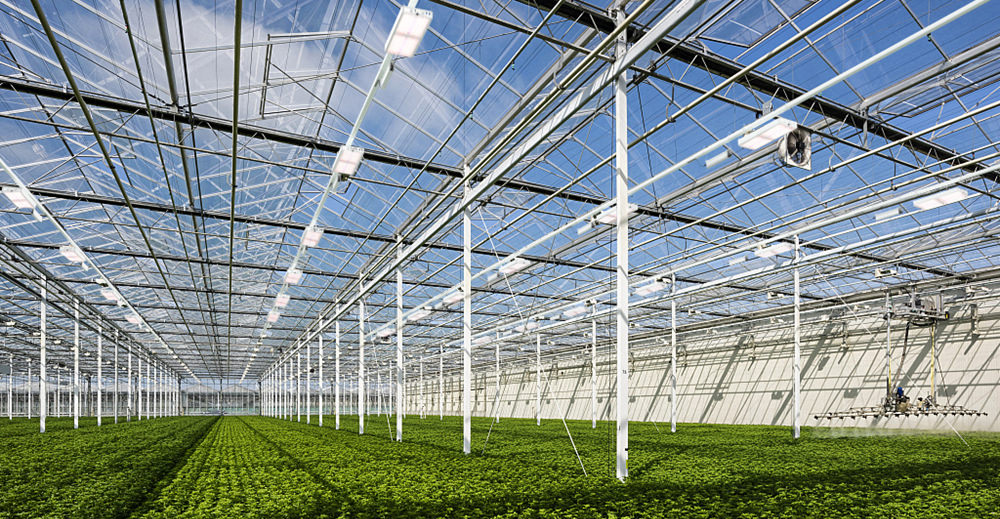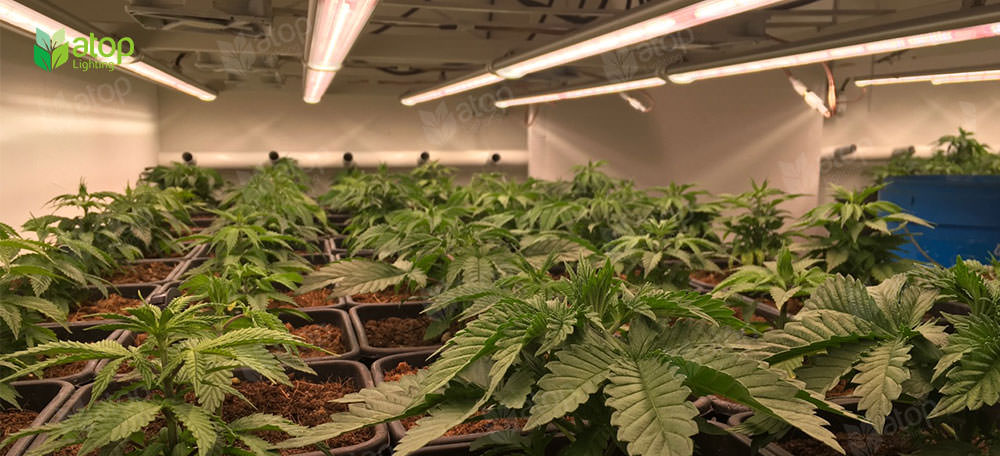Comparison between Greenhouse and Indoor Vertical Farms
As the demand for fresh produce, flowers, and medicinal plants continues to rise, horticulture businesses are under mounting pressure to optimize their cultivation methods. This is where the exciting world of controlled-environment agriculture (CEA) steps in, offering growers a powerful solution. Greenhouse and indoor vertical farms are two of the most prominent approaches in the industry using CEA.
But with both methods promising year-round harvests and optimal growing conditions, what are their differences? Which one is right for you?
What Is Greenhouse Cultivation
Greenhouses are made of glass or plastic, providing a sheltered environment where plants thrive under carefully regulated conditions. One of the main advantages of greenhouse cultivation is the ability to harness the sun’s rays to drive photosynthesis, reducing the need for artificial lighting. This allows growers to minimize their reliance on supplemental lighting and lower their operational costs.
Of course, greenhouse cultivation is not without its challenges. Most greenhouses are not sealed environments, which causes issues like temperature swings, pests, and diseases. Even in sealed greenhouses, poor ventilation and extreme climates can also pose risks to plants.

What Is Indoor Vertical Farming?
Indoor vertical farming is a farming method that grows plants in entirely controlled environments, independent of external climatic conditions. Unlike greenhouse cultivation, indoor vertical farming occurs within enclosed spaces such as warehouses, shipping containers, or purpose-built grow rooms. Vertical farming also creates a total artificial ecosystem where every parameter is precisely managed.
The primary advantage of indoor vertical farms lies in their unparalleled level of environmental control. By engineering the ideal growing environment for each plant, growers can maximize yields, enhance product quality, and maintain consistent production schedules year-round.
The tradeoff for indoor growing is the significant upfront investment required to establish a fully equipped vertical farming facility. Moreover, the small indoor spaces limit your yield and plant selection. The lower ceiling means you can only grow shorter plants.

Key Differences between Greenhouse and Indoor Vertical Farms
From the brief introduction of greenhouse and vertical farming, we can see that both methods have gained significant traction. So what are the differences between them? Here, we show you some key differences between greenhouse and indoor vertical farms.
Cost Comparison
Greenhouses generally require a lower initial investment compared to indoor farms. Building a greenhouse involves upfront expenses for construction, glazing materials, infrastructure, and climate control systems. The climate control systems are often less complex and cheaper than those in indoor facilities. On the other hand, indoor vertical farms carry a heavier upfront cost. Indoor facilities require substantial investments in LED grow lights, HVAC systems, and environmental control technology.
In terms of operating costs, greenhouses also cost less than indoor farms. Greenhouse cultivation utilizes both natural sunlight and LED grow lights to reduce energy costs, while indoor farms have higher electricity bills for LED lighting and climate control systems.
Yield and Quality
Both greenhouse and indoor vertical farms can deliver impressive results in crop yields and quality. However, their specific outcomes often depend on the crops and growing techniques employed. Generally, indoor vertical farms offer greater control over environmental variables, resulting in higher crop yields and better quality compared to greenhouse cultivation. However, some argue that greenhouse-grown produce, bathed in natural sunlight, develops a more robust flavor profile.
Lighting Management
Greenhouses primarily utilize natural sunlight supplemented with artificial lighting as needed, aiming to maximize energy efficiency. Growers may use shade cloths or light-diffusing materials to regulate light intensity and prevent crop damage from excessive sunlight.
Indoor vertical farms rely entirely on artificial lighting systems to provide consistent illumination throughout the growing cycle. High-efficient LED grow lights provide precise control over light spectrum, intensity, and photoperiod, allowing growers to tailor lighting conditions for optimal plant growth and development.
Environmental Control and Management
Most greenhouse growers must contend with the variability of outdoor conditions, managing factors like temperature, humidity, and air circulation to maintain optimal growing environments. Heating, cooling, and ventilation systems are essential for maintaining optimal conditions throughout changing seasons. Some greenhouse growers utilize natural ventilation methods, such as ridge vents or side vents, to regulate airflow and prevent humidity buildup.
Indoor farms afford precision in environmental control, with sophisticated HVAC systems, dehumidifiers, and CO2 supplementation ensuring stable conditions regardless of external factors. Enclosed environments offer complete insulation from external influence, allowing for an optimal and tailored environment for plants.
Plant Selection
Greenhouses accommodate a wide range of crops, including vegetables, flowers, and herbs. Tomatoes, peppers, cucumbers, eggplants, leafy greens, and many herbs flourish in these conditions. These crops benefit from extended growing seasons and protection from adverse weather conditions, contributing to higher yields and better quality.
Indoor vertical farms are ideal for high-value crops requiring quality control, such as cannabis, herbs, microgreens, and specialty vegetables. The controlled environment of indoor farms allows sensitive crops to grow year-round with consistent quality and uniformity. However, indoor vertical farming is not suitable for low-value, high-volume crops due to the high production costs.
Sustainability and Environmental Impact
Both greenhouse and indoor vertical farms can be water-efficient with drip irrigation, recirculation systems, and soilless growing systems.
Greenhouse structures utilize natural sunlight and passive solar heating, reducing reliance on fossil fuels and lowering carbon emissions. Additionally, innovative practices such as rainwater harvesting and integrated pest management further enhance sustainability in greenhouse operations.
Indoor grows, while capable of achieving high yields, can have a higher environmental impact due to their reliance on artificial lighting and energy-intensive HVAC systems. However, the ability to locate indoor farms in urban areas minimizes transportation costs and the environmental impact associated with long-distance produce shipment.
Greenhouse or Indoor Vertical Farms?
Market reports on global indoor farming indicate a notable surge in the growth of vertical farms. In 2021, greenhouse cultivation dominated the indoor farming sector, commanding the highest market share. However, vertical farms also demonstrated substantial revenue generation during this period. Fast forward to 2022, there's been a remarkable shift: indoor vertical farming has surged, claiming 35% of the global market share, surpassing that of greenhouses. This trend suggests that vertical farms are increasingly becoming a favored choice for indoor agriculture.

Greenhouse cultivation and indoor vertical farming each other offer distinct advantages and present unique challenges. Choosing between them depends on various factors. Greenhouse cultivation could be preferable if you’re looking for a solution with lower initial costs. On the other hand, if you aim to cultivate high-value herbs or crops, indoor vertical farms are ideal choices due to their controlled environment and space efficiency.
Nevertheless, it’s crucial to emphasize that the decision should ultimately based on your specific needs and objectives.

